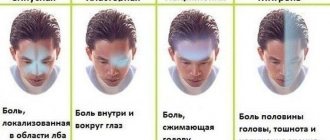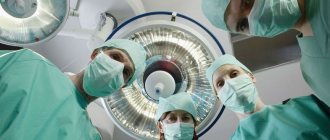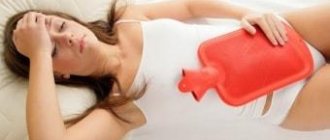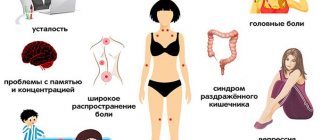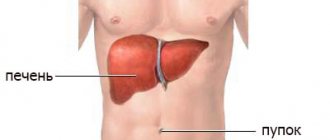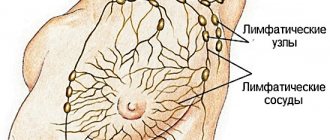Even minimal headaches significantly impair the quality of life. What can we say about the pain that prevents you from working fully, performing everyday activities, or even just getting out of bed. If you're tired of taking pills for your headache, it's time to figure out the causes of your headaches and, perhaps, help yourself on your own - with the help of massage and exercises.
For a modern person, a headache has become a standard situation, on which there is no point in wasting time and it is easier to wash down the discomfort with pills. In fact, like any pain, a headache signals problems in the body - it can be primary and secondary when it accompanies another disease.
There are many more causes of headaches than those we will talk about. To make an accurate diagnosis, you need to understand the location, nature, duration of pain, get tested and be examined by a doctor. For some types of headaches, you can help yourself: we give effective exercises that will help with regular training.
So, let's find out why you have a headache?
Tension headache
A dull monotonous pain covers the head on both sides, like a hoop. If such pain haunts you more than 15 days a month, then it is already considered chronic. “Neurotic helmet”, as this type of headache is also called, more often overtakes people who often experience stress, emotional tension and overwork.
Tense neck muscles for a long time also provoke this pain, so office workers who sit at the computer and phone all day always carry Citramon with them. By the way, if used frequently, analgesics will cause severe headaches, did you know?
What to do? Brew some chamomile tea, play soothing music, fill the room with pleasant smells, breathe deeply and try these exercises.
- With your palms open, press on your temples with your fingertips. Massage with small circular movements.
- Round your palm into a crab shape. Wrap your fingers around the temples and frontal lobes of the skull. Massage with gentle pressure.
- With an open palm, clasp your temples and apply pressure, varying the intensity.
Vegetative-vascular dystonia
The pain throbs in the temples, the general condition is broken, the face looks swollen, as if you had been partying all night. The pain can cover two parts of the head at once, radiating to the back of the head, forehead, temples, and eyeballs. Most often, headaches with VSD occur in the morning or at night.
Often such pain occurs when the weather changes; in women it is associated with the menstrual cycle. Maybe your blood vessels are spasming or your blood pressure is jumping sharply - with VSD, the headache is secondary and most often serves as a sign of a malfunction in the central and autonomic nervous system.
What to do? Eliminate caffeine from your diet, go swimming, make a wet compress and study a set of procedures.
- Using the pads of your outstretched fingers, press horizontally on the neck muscles at the level of the hairline
- Connect your index and middle fingers. Massage from below with short circular movements the point where you feel the bones of the skull begin. To feel it, tilt your head back - it will be somewhere on the fold line.
- Connect your index and middle fingers. Massage from above with short circular movements the point where you feel the bones of the skull begin. To feel it, tilt your head back - it will be somewhere on the fold line.
- Place your fingers on the neck muscles that hug the line of the spine. Press with your fingertips in a gripping motion, varying the intensity.
Advertising
Osteochondrosis of the cervical spine
A headache with osteochondrosis comes suddenly to the occipital part, and then spreads to the entire skull. Characteristic accompanying symptoms are numbness and tingling of the fingers, dizziness, deterioration of the senses, and noticeable spasms in the neck. In the process of diseases of the cervical spine, blood circulation is disrupted, nerves and arteries are pinched due to displacement of the vertebrae.
For 90% of owners of phones and gadgets, the phrase “smartphone neck” is relevant, because at the end of the working day, spasms in the cervical spine are simply inevitable with such a lifestyle.
Editing the atlas with a medical stylus
What should I do? Improving the health of the entire spine is the only correct option for treating osteochondrosis. Start by visiting a chiropractor who can adjust the first cervical vertebra (atlas), or at least stretching in the morning.
Prevention so that your head muscles no longer hurt
During the treatment period and after recovery, it is necessary to continue a healthy lifestyle and follow simple rules. These include walks in the fresh air, regular physical activity, contrast showers to improve tone in the morning and during an attack, proper sleep, rational distribution of work and rest time, correct posture and others.
These tips are recommended for use when a tension headache begins. Massage is quite effective and can be easily performed independently without any special knowledge in medicine. Impact on pain points leads to a visible improvement in the general condition. In case of severe pain, you are allowed to take a painkiller tablet, but still visit a doctor and undergo a comprehensive examination.
Migraine attack
This disease simply leaves no chance for a full life. During migraine attacks, a person is completely unable to work, because unbearable pain in exactly one half of the head literally knocks him off his feet. This is often a hereditary disease, more common in women. Doctors associate this pathology with a disorder in the metabolism of serotonin, a substance involved in the transmission of nerve impulses.
A migraine attack lasts from 4 hours to 3 days, it can be predicted by typical signs - bright flashes begin to jump before the eyes, the field of vision narrows and becomes cloudy, the picture doubles.
Migraine treatment is strictly prescribed by a doctor; no self-medication will help here, because different drugs are used at different stages of migraine.
What to do? As soon as you feel the symptoms approaching, give yourself time in advance to wait out the storm - moderate lighting, bed rest, a warm bath. It has been reliably established that a hard massage of the fingers, the back of the head and the tablet helps.
- With the fist of your left hand, clasp the fist of your right. Place the thumb of your right hand on top. Squeeze your fists together tightly for a minute, then switch hands.
- Use your index finger and thumb to squeeze the adductor pollicis muscle of your other hand. Alternately change palms.
- Use your thumb and index finger to massage the fingertips of your other hand. Change hands and pressing force depending on how you feel.
- Use all fingers of your hand (except the thumb) to grab the fingers of the other hand, forming a half-fist. The thumbs on both hands are pressed against the palm. Press with pulsating movements.
- Pull your fingers back, with the exception of your thumb, stretching the wrist muscles until you feel pain. Change hands.
- Place your middle finger behind your ring finger and pull it back. Change hands.
- Use your thumb and index finger to massage the middle phalanges of the fingers of the other hand. Change hands and pressing force depending on how you feel.
- Pull your fingers back one by one. Hold the stretch slightly at the lower tension point. Change hands depending on how you feel.
- Using your thumb and index finger, massage the lower phalanges of the fingers of the other hand. Change hands and pressing force depending on how you feel.
- Use your thumb and index finger to massage the central point on the palm of your other hand. Change hands and pressing force depending on how you feel.
Why do all the muscles of the body hurt?
As you know, most often pain throughout the body is the body’s response to various infectious diseases (can even be a consequence of pneumonia!), all kinds of injuries and physical stress.
Infectious diseases are often accompanied by the following symptoms: the whole body hurts, aching bones and joints, restless sleep, headache, fever. It also happens that in the presence of an infectious process, the temperature, on the contrary, decreases, and the patient experiences malaise in the form of lethargy, reluctance to move and the release of cold sweat.
At the same time, pain throughout the body is often observed with such problems as:
- Various blood diseases (lymphoma, leukemia, etc.);
- The presence of a malignant tumor;
- Autoimmune diseases (eg, lupus);
- Connective tissue damage (rheumatoid arthritis);
- Food poisoning;
- Tick bite.
Blood diseases and malignant tumors require immediate treatment, so if the body hurts constantly, but there are no cold symptoms, it is necessary to undergo examination as soon as possible.
In autoimmune diseases and connective tissue damage, the pathogenic process inside the joints contributes to the spread of pain to the adjacent muscles. This explains the pain throughout the body, which prevents a person from living a full life.
Characteristic signs of rheumatoid arthritis are pain in the morning after sleep. As a rule, after the patient moves a little, they subside significantly. With osteoarthritis, the body hurts, on the contrary, in the evening.
Food poisoning can also be the answer to the question of why all the muscles of the body hurt. Very often, such ailments are accompanied by additional symptoms such as high fever, general weakness of the body, sharp pain in the lower abdomen. Again, there are cases when the temperature is below normal, the patient experiences chills, cold sweat appears on the body and the whole body hurts.
The bites of some ticks, which are carriers of an infectious disease, can also cause aching pain throughout the body. Determining the cause of the disease in this case is not particularly difficult: as a rule, after such a bite a rash appears in the form of small blisters with a clear liquid inside.
In addition, redness of the skin is often observed not only at the site of the bite, but also in other parts of the body.
Thus, if the body hurts constantly, you should immediately consult a doctor. Indeed, in addition to the fact that this symptom may indicate the presence of various diseases, it can often lead to the following problems:
- Severe chronic pain that replaced moderate pain;
- Fatigue;
- Insomnia;
- Weakening of the human immune system;
- Forced cessation of activity;
- Stress and sudden mood swings;
- Other psychological problems (increased irritability, anxiety, unexplained fears, depression, etc.).
When the whole body regularly hurts, the cause may be, in addition to the above-mentioned diseases, also such a common chronic disease as fibromyalgia. Despite the fact that, according to some data, every tenth person on earth suffers from it, both the disease and its causes are still not fully understood. This is why fibromyalgia is rarely diagnosed.
Nevertheless, this disease can often explain why the whole body hurts. However, there are no laboratory tests to identify this disease, so doctors have to rely on specific data from a general examination and the patient’s complaints.
Diagnosis is also complicated by the fact that the accompanying symptoms of this disease are completely different in different patients. Among the most common signs, in addition to pain throughout the body, are:
- Chronic fatigue;
- Sleep disturbance;
- Scattered pain in ligaments, tendons and muscles.
Doctors are also misled by the following fact: some patients complain that the whole body hurts, while others, on the contrary, note specific centers of painful sensations. However, the diagnosis is the same among patients.
It is noteworthy that about 80% of fibromyalgia sufferers are female. Some scientists attribute this to the fact that this disease is provoked by an increase in central sensitivity.
Thus, the reasons that the whole body hurts lie in the brain, which changes its functions towards sensitivity. It is not surprising that one of the main signs of the disease is a decrease in the pain threshold.
In addition to symptomatic treatment aimed at relieving pain, with this diagnosis, antidepressants are often prescribed, designed in this case to restore proper brain function.
If, when asked why the whole body hurts, the doctor answers that the patient has fibromyalgia, you must first eliminate all kinds of stressful situations from your life. Along with this, as a rule, it is recommended:
- Muscle relaxants;
- Non-steroidal anti-inflammatory drugs;
- Hypnotic;
- Anticonvulsants;
- Manual therapy.
When there is general weakness and the whole body hurts, you should seriously consider strengthening the immune system. Eating foods containing large amounts of vitamins and frequent walks in the fresh air are the best means to combat body weakness.
Body aches are a phenomenon that accompanies quite a large number of conditions and diseases. The symptom itself is unpleasant, but sometimes another nuisance is added to it - a headache.
Body aches, and especially in combination with pain in the head, can be a signal of diseases in the body, sometimes very serious ones.
Body aches are a phenomenon that accompanies quite a large number of conditions and diseases. The symptom itself is unpleasant, but sometimes another nuisance is added to it - a headache.
Infectious diseases
Similar symptoms are most often caused by ARVI or influenza. People who have a cold report not only a headache, but also an increase in body temperature, severe weakness and chills.
However, a cold is not always accompanied by a high temperature. It happens that only aches and pains signal that an infection has entered the body.
Infectious diseases transmitted by ticks pose a particular danger. If body aches are accompanied by any of the following symptoms, you should seek medical help immediately:
- Redness of unknown origin was found on the body or redness appeared around the bite.
- Itchy small watery blisters appeared.
- Very often, a tick can attach itself to a person and go unnoticed. If you experience these signs even a few weeks after a walk in nature, this is a reason for an emergency visit to a medical facility.
Aches without fever, but accompanied by chills, cold sweats and weakness are typical for infections caused by food poisoning, pneumonia, and botulism.
Parasites
A variety of helminths that feed on the human body cause metabolic disorders and blood loss. With a parasitic infestation, all the symptoms of an infectious disease are observed, but the main one is weakness.
Intoxication
In case of poisoning with low-quality or expired products, toxic substances, or medications, toxic substances have a destructive effect on the membranes of the nerves. Victims experience aching throughout the body, nausea and vomiting, severe fever, weakness, dizziness, and sweating.
Nervous and mental disorders
Neuroses can manifest themselves in the form of a wide range of very diverse symptoms: it can be aches, pain in different parts of the body, chills, low-grade fever. Similar symptoms are observed in clinical depression.
In this case, patients note dysfunction of various internal organs (for example, constipation, urinary retention, impaired potency). There is increased weakness - in severe cases, people are unable to get out of bed.
Such disorders are treated by a neurologist or psychotherapist.
If you suffer from nervous headaches and need a selection of treatment options, read the review on our website on the topic #171;Nervous headaches#187; Here .
Useful information: Fighting headaches: what compresses will help
Diseases of joints and muscles
When a joint becomes inflamed, nearby muscles spasm, the nerve is pinched, and pain appears. People with diseases of the joints and muscles of the shoulder girdle and neck experience not only aches throughout the body, but also severe headaches. Similar symptoms are observed with joint lesions caused by systemic lupus erythematosus, psoriasis, and rheumatoid arthritis.
Oncological diseases.
Increased intracranial pressure
Pressing and bursting pains are often observed after birth or traumatic brain injury. Without experience, it can be confused with a migraine attack - also intolerance to bright light, nausea, and blurred vision.
Due to the increased pressure inside the skull, the pain is very strong over the entire surface of the head, sometimes radiating to the area around the eyes. Pain due to ICP increases gradually, not overnight. It occurs most often in the morning, accompanied by vomiting, swelling, and decreased libido.
What to do? Electrophoresis and acupuncture must be done by a qualified specialist, and you can help yourself at home with simple exercises: tilting your head up and down, left and right.
Viral or bacterial disease
Headache in this case is a secondary symptom, and the intensity varies from sluggish pain in ARVI to acute and throbbing pain in meningitis. The last example, by the way, is a reason for urgent hospitalization.
In mild cases, the headache quickly goes away as you recover or take antipyretics. If you catch an infection, then in addition to headaches there will be fever and chills - the body is fighting with all its might against foreign “invaders”.
Headache with neurological symptoms accompanies menningitis, pneumonia, malaria and typhus.
What to do? Physical exercises will not work to get rid of such a headache; it is necessary to treat the primary disease.
Advertising
It’s clear, how to treat now?
If it becomes more and more painful to turn your head, this should not be attributed to general overwork and fatigue. Regular and prolonged attacks are easier to eliminate at the initial stage. In the future, treatment will be less effective and may have a large number of complications.
Signals to see a doctor:
- the occurrence of pain of an unknown nature;
- the duration of the attack is more than 3 days;
- the form of pain resembles an “explosion” in the head;
- disturbances of visual and speech function, coordination of movements, general weakness in the limbs;
- immobility in the neck;
- possible increase in temperature;
- an increase in the attack with any physical activity and simply turning;
- vomiting without nausea;
- The pain occurs after a certain period of time and does not subside on its own.
Pain in the frontal or occipital part of the head that occurs due to tension can be treated using various methods. To improve the patient’s condition more quickly, not only pharmacological methods are used.
The most commonly used sessions are psychotherapy, physiotherapy, therapeutic exercises, massage of the neck-collar area and the head itself, taking a hot bath for relaxation, following a special daily regimen and maintaining an active lifestyle.
As a medicinal method, injections with novocaine are quite effective, which can reduce tension. In this case, it is necessary to find the painful point and inject the medicine into it. For general relief, you can moisten cotton swabs with the solution and insert them into the nasal openings.
To eliminate psychogenic factors (depression, stress), in addition to sessions of psychotherapy, yoga, hypnosis and other procedures that relax the nervous system, it is recommended to take medications. Most often, specialists prescribe antidepressants, non-steroidal analgesics, benzodiazepines, etc.
You should not take medications without consulting a specialist. Self-medication ultimately does not lead to an improvement in the condition, but only makes it difficult to make a correct diagnosis. This is due to the fact that common analgesics and other painkillers change the picture of the disease.
Inflammation of the sinuses
Headache, which occurs due to inflammation in the sinuses, comes along with nasal congestion and runny nose. It is deep and constant, according to the patient’s sensations, and is located in the maxillary, paranasal or paranasal region. Swelling of the face, spasms on the forehead and cheekbones, and sudden movements intensify the headache - all these are signs of inflammation of the sinuses.
Sinus headache goes away along with the underlying disease - allergies, infection or neoplasm.
What to do? For an accurate diagnosis, as well as a treatment method, see a doctor.
Let's look into the reasons, and by the way, there are many of them.
Pain in the muscles of the head and neck often radiates to other parts of the body, which complicates the diagnosis and timely initiation of treatment. When examining a patient, it is necessary to familiarize yourself with the full picture of the condition.
The causes of pain are:
- myositis - inflammation of muscles during prolonged hypothermia of the body (pain intensifies when turning the head);
- spasm of muscle fibers - develops against the background of stressful situations, inflammatory processes or any damage to the spine;
- physical fatigue - excessive loads on any muscle group cause other groups to strain, the neck muscles suffer the most due to the fact that they are additionally responsible for muscle tone and holding the head;
- stretching of tissues - occurs when excessive loads or unsuccessful rotation of a person’s head or body;
- cervical osteochondrosis – is a lesion of the intervertebral disc located in the upper part of the spine;
- displacement or compression of nerve endings occurs as a result of trauma or damage to the spine;
- frequent depression, stress;
- monotonous work or staying in one position for a long time (when working at a computer, when driving a car, assembly line activities).
Trigeminal neuralgia
You recognize this pain as a short but excruciating flash that appears in any area of the face completely suddenly. The attack interval is from 10 seconds to 2 minutes, and no pills will help - you just need to wait it out. Facial muscles may contract convulsively and uncontrollably, and pain points may migrate from attack to attack.
This is how the trigeminal nerve is affected due to caries, stomatitis and even malocclusion. Potentially, no one is immune from such attacks. The pain comes from the bottom of the jaw, in the neck and chin, if the lower jaw branch is affected, and if it radiates to the nose area, then also the upper jaw branch.
The most severe pain appears when the eye area is also involved, along with the temples, forehead and eyebrows.
What to do? Urgently go to the doctor, because the causes of the disease can be very different - dental diseases, impaired metabolism, cerebral aneurysm, and more.
Do you even know what muscles you have on your head?
All muscles of the human head are usually classified into a special group. They are mimic and chewable. It is worth noting that the masticatory muscles are primarily responsible for the process of chewing and swallowing food, and for the speech function of the body. Actions are carried out due to contraction and relative displacement of the lower part of the jaw.
Without facial muscles it is impossible to imagine any facial expression. Each person, with the help of this muscle group, is able to express emotions, which is due to multiple combinations of contractions and relaxations. Their distinctive feature is that they are attached not only to the bone tissue, but also to the skin tissue of the head.
Cluster headache
This is the same pain because of which people are ready to commit suicide - it is so unbearably painful. It feels similar to the process of piercing the eye from the inside. Cluster pain is concentrated in just one point on the face, most often the forehead or eye. Accompanied by redness of the eyes, nasal congestion, and increased sweating. Attacks lasting from 15 minutes to 2 hours come serially - 2-3 times a day for weeks or months, and then recede for several years. Exacerbations occur in the mid-season, and according to statistics, men are more likely to suffer.
What to do? Live a healthy lifestyle, undergo behavioral therapy and take pills after discussing with your doctor.
Caffeine needle
We have already mentioned abuse headaches, which occur when you stop taking your usual pills. The same thing happens to the body when you give up any other “drug” - coffee, soda or tea. The body reacts to a sharp withdrawal from such dopings with throbbing headaches in the temporal regions, weakness, irritation, absent-mindedness, anxiety, fear, sleep disturbance and nausea.
What to do? Along with following a balanced diet with the exclusion of harmful foods, try herbal medicine and kinesiotherapy.
